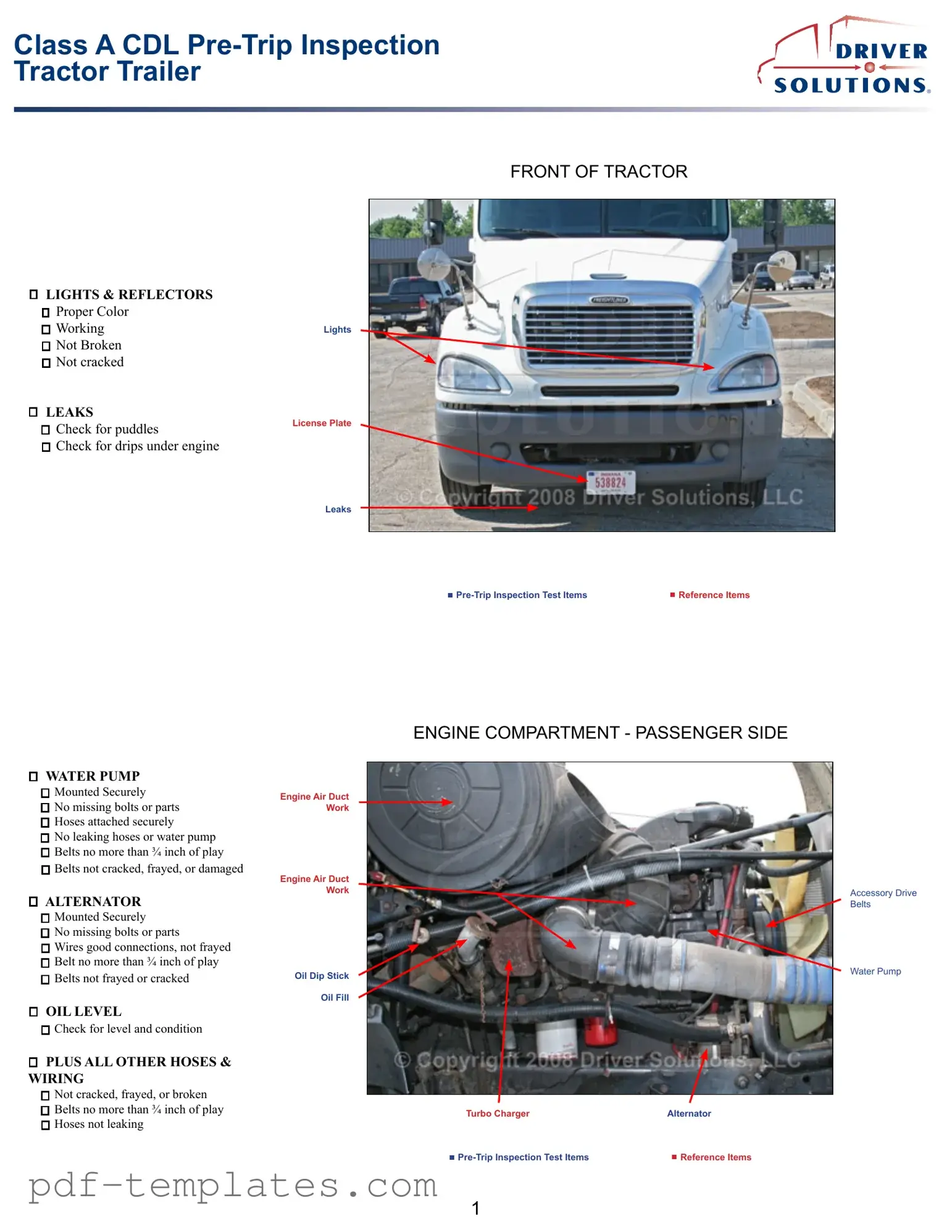The Vehicle Maintenance Log is similar to the Pre Trip Inspection Checklist as it serves to document the condition and maintenance of a vehicle. Both documents focus on ensuring that a vehicle is safe and operational. While the Pre Trip Inspection Checklist is used before a trip to assess immediate safety, the Vehicle Maintenance Log tracks ongoing maintenance activities, repairs, and any issues that arise over time. This ensures that the vehicle remains in good condition throughout its use.
The Trader Joe's application form is a vital document for job seekers wishing to join this beloved grocery chain. It outlines necessary information about potential employees and provides an opportunity to showcase their unique skills and experience. Completing the form accurately can significantly increase the chances of landing a position at one of their stores, and it can be conveniently accessed at documentonline.org/blank-trader-joe-s-application/.
The Daily Inspection Report also shares similarities with the Pre Trip Inspection Checklist. It is used by drivers to perform routine checks on their vehicles before starting their shifts. Both documents emphasize safety and operational readiness. The Daily Inspection Report typically covers a broader range of checks that may include fluid levels, tire conditions, and other essential components, ensuring that any potential issues are identified early.
The Safety Inspection Checklist is another document that aligns closely with the Pre Trip Inspection Checklist. This checklist is often used in various industries to ensure that equipment and vehicles meet safety standards. Like the Pre Trip Inspection Checklist, it focuses on identifying hazards and ensuring compliance with safety regulations. Both documents aim to prevent accidents and promote a culture of safety within the organization.
The Maintenance Request Form complements the Pre Trip Inspection Checklist by providing a way to report issues found during inspections. If a driver identifies a problem during their pre-trip checks, they can use the Maintenance Request Form to formally notify the maintenance team. This process ensures that any necessary repairs are addressed promptly, contributing to the vehicle's overall safety and reliability.
The Accident Report Form is related to the Pre Trip Inspection Checklist in that it documents incidents involving vehicles. While the Pre Trip Inspection Checklist is proactive, focusing on preventing issues, the Accident Report Form is reactive, detailing what occurred after an incident. Both forms are essential for maintaining safety standards and ensuring that vehicles are fit for use, but they serve different purposes in the overall safety management process.
The Equipment Inspection Form is similar to the Pre Trip Inspection Checklist in that it assesses the condition of equipment before use. This document is often used for heavy machinery or specialized vehicles. Both checklists share a common goal: to ensure that all equipment is safe and functioning correctly before it is put into operation, thereby minimizing the risk of accidents or breakdowns.
The Driver’s Log is another document that parallels the Pre Trip Inspection Checklist. While the Pre Trip Inspection Checklist focuses on vehicle condition, the Driver’s Log records driving hours, routes taken, and any incidents that occur during a trip. Both documents help in monitoring driver behavior and vehicle performance, contributing to overall safety and compliance with regulations.
The Fuel Efficiency Report can also be compared to the Pre Trip Inspection Checklist. This report tracks fuel consumption and efficiency metrics over time. While the Pre Trip Inspection Checklist ensures that the vehicle is ready to operate safely, the Fuel Efficiency Report provides insights into the vehicle's performance, helping identify any issues that may affect fuel consumption and overall efficiency.
Lastly, the Compliance Check List is akin to the Pre Trip Inspection Checklist in that it ensures adherence to regulations and standards. This document typically covers various compliance areas, including safety, environmental, and operational requirements. Both checklists are essential for maintaining standards and ensuring that all vehicles and operations meet legal and organizational requirements.
